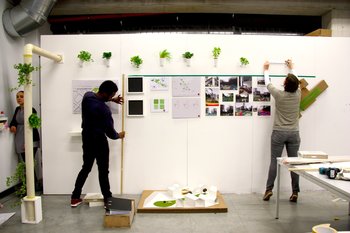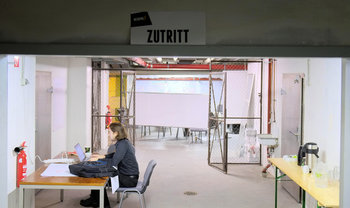|
| |
A contextual inquiry is a customer interview centered around observing the customer perform tasks. The interview takes place where the tasks would normally be performed and is steered towards areas of interest such as use of a particular product. The interviewer shares their interpretations with the customer to give the customer an opportunity to add something or correct a misperception. The following are illustrative examples.WorkflowA business analyst is gathering requirements for an improved business process. She visits users to watch them perform their parts of the process. Users provide their comments regarding things that would make their jobs easier or common exceptions they encounter.ProductA brand of baby strollers aims to be the best on the market by conducting research in the field with a variety of customers. They visit customers and watch them use their strollers in a variety of real world situations such as putting the stroller in a small car or visiting a park.
User InterfacesAn electronics company takes a ride with a variety of customers to watch them using their car navigation system. The context reminds customers of things they find difficult to use and generates more information than an online survey.Customer ExperienceA restaurant chain invites regular customers to a customer interview over dinner at the restaurant to discuss things like taste, menus, selection, ingredients, prices, service, music and decor. The context of an actual location triggers interesting suggestions and insightful customer observations.|
Type | Customer Interview | Definition | A customer interview centered around observing the customer perform tasks in a natural setting or experiencing your brand. | Related Concepts | |
Market Research
This is the complete list of articles we have written about market research.
If you enjoyed this page, please consider bookmarking Simplicable.
A systematic investigation of market conditions including customers and the competition.
A definition of data-driven marketing with examples.
A list of common market positioning strategies.
A definition of test marketing with examples.
The common types of product involvement.
The common types of competitor.
A definition of latent need with examples.
A definition of market intelligence with examples.
A definition of organizational intelligence with examples.
A comprehensive guide to design.
An overview of color theory.
The difference between layout and composition.
The difference between modeless and contextual user interfaces explained.
A list of common types of design.
The steps in a design process.
The common types of design quality.
A definition of universal design with examples.
A definition of sensory design with examples.
An overview of emotional design.
The definition of elegance with examples.
TrendingThe most popular articles on Simplicable in the past day.
Recent posts or updates on Simplicable.
Site Map
© 2010-2023 Simplicable. All Rights Reserved. Reproduction of materials found on this site, in any form, without explicit permission is prohibited.
View credits & copyrights or citation information for this page.
|































